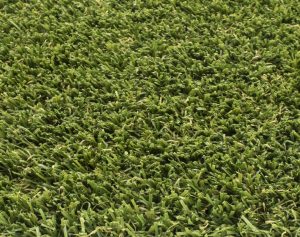Cutting artificial grass properly is one of the most important parts of getting a clean, professional-looking lawn. Get it right, and your turf will have neat edges, invisible joins, and a natural finish. Get it wrong, and you’ll be left with jagged seams, wasted rolls, and an installation that doesn’t last.
At As Good As Grass, we’ve been installing lawns across Greater Manchester and the North West for over 20 years. Here’s our complete guide to cutting artificial grass – whether you’re tackling a DIY project or want to know how the pros do it.
🧭 Jump to:
- Why Cutting Matters
- Tools You’ll Need
- Step-by-Step Cutting Guide
- Extra Tips from the Pros
- Common Mistakes to Avoid
- FAQs
- Final Word
Why Cutting Matters
Artificial grass isn’t forgiving like natural turf. Once you cut, there’s no regrowth to cover mistakes. That’s why neat, accurate cutting is essential:
- Sharp edges – keeps your lawn tidy and professional-looking.
- Invisible joins – prevents gaps or overlapping seams.
- Precise fit – makes sure turf sits flush against edging, posts, and borders.
- Long-term stability – correct cuts reduce lifting and curling over time.
👉 Planning a full project? See our artificial grass installation service.
Tools You’ll Need
Having the right kit makes cutting quicker and safer:
- Stanley / utility knife with spare sharp blades (your main cutting tool)
- Heavy-duty scissors (for trimming edges, not full cuts)
- Straight edge or chalk line (to guide long cuts)
- Tape measure (accurate measuring is everything)
- Turf cutter (optional, for large soil removals)
- Protective gloves & knee pads (for comfort and safety)
👉 Not sure which grass to choose? Explore our premium ranges including Elite and Lux.
Step-by-Step: How to Cut Artificial Grass
Cutting isn’t complicated, but accuracy is key. Here’s the process our fitters use:
Step 1. Measure & Plan
Work out where each roll will go and mark joins in advance. Always allow a little extra turf to trim – you can cut off excess, but you can’t add it back.
Step 2. Roll Out & Relax the Turf
Unroll the grass and leave it for a few hours (or overnight if possible). This lets creases drop out and makes cutting easier.
Step 3. Cut from the Backing Side
Always cut with the latex backing facing up. This avoids snagging fibres and gives a clean edge.
Step 4. Straight Cuts
Use a straight edge or chalk line to guide your knife. Make long, smooth cuts with steady pressure. Replace blades every 3–5m for a clean finish.
Step 5. Cutting Curves & Corners
For flowerbeds, trees, or patios, make small, gradual cuts. Pull the turf back slightly and cut in stages – never force a sharp curve in one go.
Step 6. Cutting Around Obstacles
Mark posts, drains, or paving edges on the backing, then cut slowly to shape. Always cut slightly wide first, then trim closer for accuracy.
Step 7. Preparing Joins
If two rolls meet, trim away 2–3 stitch lines from each edge. This prevents visible seams when joined with tape and adhesive.
Step 8. Finishing Edges
Once the turf is fixed, tidy the perimeter with smaller cuts. Push blades into the edging line and cut back excess for a snug fit.
👉 Want to see the full process? Check out our How to Install Artificial Grass guide.
Extra Tips from the Pros
A few little hacks make a big difference:
- Always cut in daylight – shadows hide seams.
- Keep a box of spare blades – blunt knives tear turf.
- Align pile direction before cutting joins.
- Save offcuts for mats, pet areas, or patch repairs.
- Brush the pile upright after trimming – it hides cut lines.
Common Mistakes to Avoid
Even confident DIYers get tripped up by these:
- Cutting from the pile side (leads to jagged edges).
- Using scissors for main cuts (they bend and fray fibres).
- Forgetting to allow for overlap (ends up with gaps).
- Rushing curves and over-trimming.
- Leaving edges unsecured after trimming.
FAQs About Cutting Artificial Grass
Still unsure about tools, joins, or trimming edges? These are the most common cutting questions homeowners ask – with straight answers from our fitting team.
What is the best way to cut artificial grass?
From the backing side, using a sharp Stanley knife and straight edge.
Can I use scissors?
Only for trimming small sections. For full cuts, always use a knife.
Can I mow artificial grass?
No – artificial grass doesn’t grow. Use a stiff broom or power brush to lift fibres.
How do you cut around curves or posts?
Make small cuts in stages, trimming closer each time. Don’t try to cut tight curves in one go.
What’s the best blade to use?
A sharp utility blade or hook blade. Change it regularly to avoid fraying the backing.
Final Word
Cutting artificial grass is where most DIY installs go wrong – but with the right tools and method, you’ll get a clean, professional finish. Measure carefully, cut from the back, replace blades often, and take your time.
Want a lawn guaranteed to look seamless? Book a free survey with As Good As Grass, and let our expert installers handle the hard work.
👉 Explore our ranges for artificial grass for gardens and dog-friendly lawns to get the perfect finish.



